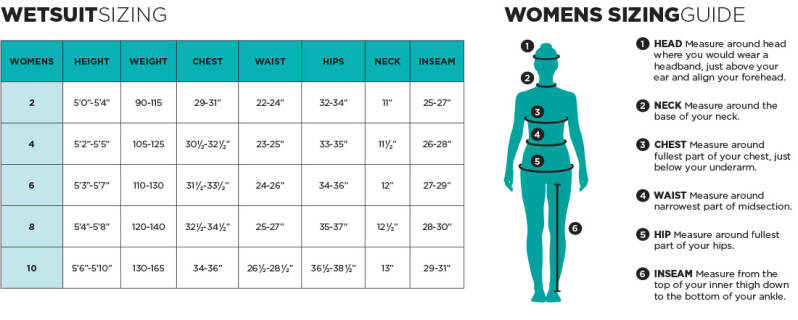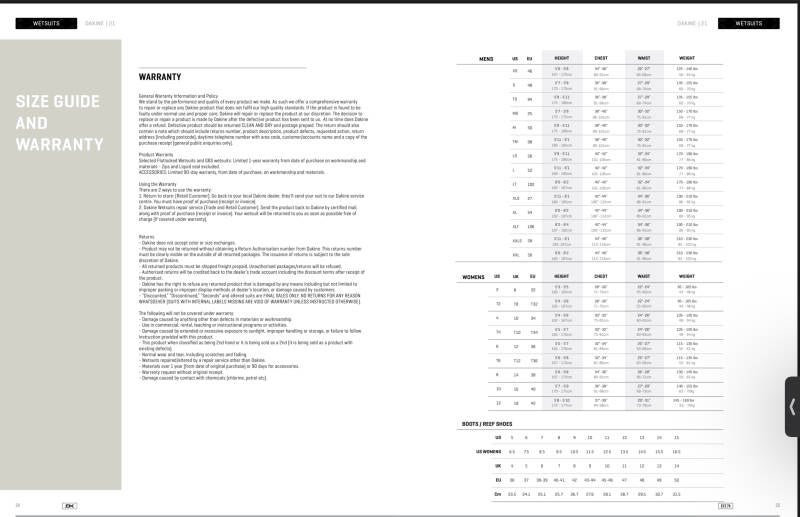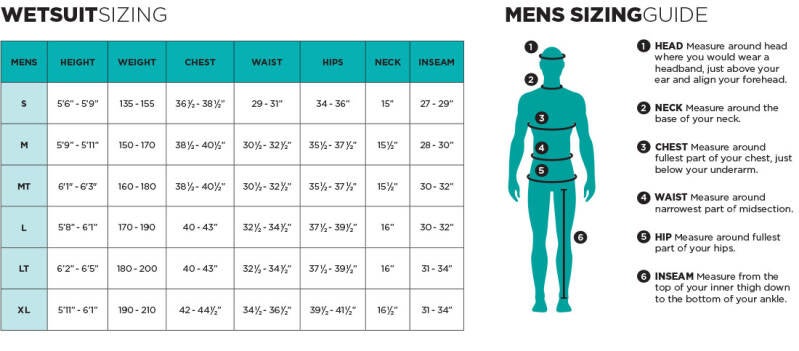Riding the Slingshot Flow Craft 70L Wingfoil Board
Winging It Watersports Review: Riding the Slingshot Flow Craft 70L Wingfoil Board
1 Oct 2024 21:40
Winging It Watersports Review: Riding the Slingshot Flow Craft 70L Wingfoil Board
If you're gearing up for water adventures in the United Kingdom, a wetsuit is an absolute must-have to keep you warm and protected. Whether you're a paddleboarder, wingfoiler or efoiler or just love exploring the coastal beauty, choosing the right wetsuit is crucial for a comfortable and safe experience. In this guide, we'll walk you through the essential factors to consider when selecting a wetsuit, including the best fit, manufacturer sizing variations, and the ideal thickness for different UK seasons.
The first and most critical aspect of selecting a wetsuit is ensuring the perfect fit. A well-fitting wetsuit will keep you warm by trapping a thin layer of water between your body and the suit, which your body then heats up, acting as insulation against the colder external water. Here's how to achieve the best fit:
• Snug but Not Restrictive: The wetsuit should fit snugly against your body without causing discomfort or restricting movement. It should feel like a second skin.
• No Gaps or Folds: Make sure there are no significant gaps or folds in the fabric. This would allow water to enter and defeat the purpose of insulation.
• Seals: Wrist, ankle, and neck seals should create a watertight barrier to prevent water from flushing in and out.
• It’s better to have a high neck seal than one that is being pulled down due to the back of the suit being too short for you. A pulled neck seal tends to gape and allow a flush of water.
• Freedom of Movement: Test different movements like bending, stretching, and squatting to ensure the wetsuit allows for a full range of motion. The suit should move with you like a second skin.
Sizing can vary between wetsuit manufacturers, so it's essential to consult each brand's specific size chart before making a purchase. Factors such as body shape, weight, and height will influence the size that best suits you. Here are some general tips to consider:
• Measurements Matter: Take accurate measurements of your chest, waist, hips, and height. Match these measurements to the manufacturer's size chart.
• Try Before You Buy: Whenever possible try to be cool & dry, as hot and sweaty tends to make getting into the wetsuit that little bit more difficult! Once on, ensure it fits well and meets your comfort requirements.
• Consider Reviews: However, we are all different sizes, have different budgets and have different sporting requirements. I have been using wetsuits for almost 40 years, I soon learned to buy the best I could afford and have used all the top brands on the market. I personally only use Dakine and Ride Engine, they fit me accurately, they stretch brilliantly with me, even my winter 6/4, and they are proving to be the best I have ever used. This is why I only sell these brands.
• Summer (June to August): Water temperatures are relatively mild during the summer, ranging from 14°C to 18°C (57°F to 64°F). A 3/2mm wetsuit (3mm thickness in the body and 2mm in the limbs) should suffice for these conditions. I am in the water most days, so acclimatise to using a 2/2 shorty on the UK Eastcoast.
• Autumn and Spring (March to May, September to November): During these transitional seasons, water temperatures drop slightly to around 10°C to 14°C (50°F to 57°F). Opt for a 4/3mm wetsuit to keep warm and comfortable.
• Winter (December to February): UK winters can be chilly, with water temperatures dropping to 5°C to 9°C (41°F to 48°F). A 5/4/3mm wetsuit (5mm thickness in the body, 4mm in the limbs, and 3mm in areas that require flexibility) is ideal to combat the cold. I also use a 6/4 Dakine, but this is often the one I opt for when teaching as it is that little bit warmer if I am standing around. It has plenty of flex and is surprisingly light for such a thick suit.

Selecting the perfect wetsuit is a crucial step to enhance your water-based adventures in the UK. Remember to prioritize the right fit, understand manufacturer sizing differences, and choose the appropriate thickness based on the season. With a well-fitting wetsuit, you'll be ready to embrace the beautiful UK waters in comfort and style.
I can supply all of the current years models, but while past season stock is available at reduced prices I like to offer these great products at bargain prices.




Have you ever dreamed of flying over the water with nothing but a wing and a board? If so, you might want to try wingfoiling, one of the latest and most exciting water sports. Wingfoiling is a combination of kitesurfing, windsurfing and surfing, where you stand on a board with a hydrofoil and hold onto an inflatable wing (sail) that propels you across the water. You can also use the wing on different types of boards and surfaces, such as SUPs, landboards, skis or snowboards. It’s a great way to enjoy different conditions, explore new spots, and improve your fitness and balance. In this blog post, I will share with you my experience of wingfoiling in the Tendring District of Essex and South Suffolk UK, a beautiful coastal area that has a lot to offer for wingfoilers of all levels.
I only started wingfoiling in Autumn 2021, coming from an advanced Windsurf and Intermediate Kitesurf background, and because there was no one I knew of locally teaching it, I assumed I would teach myself, after all, how hard could it be?
I bought some brand new equipment, all from an online budget provider, simply to test whether I would like the sport or not. The board was an inflatable board, about 140 litres and 5’5” long, the wing was a 5m wing and the foil was an XXL in the brands range, I won’t name the brand as it could be unfair, because after a lot of swimming, splashing and swearing I concluded the sport was not for me. However, thanks to a lifelong friend I realised the kit I had bought was completely wrong for me. Looking back, the equipment, especially the foil and mast were about as stiff as a wet noodle.
I headed to a nearby retailer and bought a composite board, not the board I wanted, simply what the retailer had available, it was 125 litres, bigger than I needed, a better quality wing, albeit 4.5m and therefore smaller than I wanted, but again its what the retailer had available and then a much stiffer foil and mast from another provider.
I returned to the water, this time a lake to get flatter water, instead of the open sea, and within minutes experienced my first flight on a foil, propelled by a wing. I soon crashed, fell in, climbed back on and did it all again and again, until my foil flights were sustained from one side of the lake to the other. I was absolutely hooked by the sport, the near silence of gliding above the water at speeds seemingly faster than the wind, I didn’t want any excuse to stop improving.
It was now late October 2021 and in order to motivate myself to persevere with the sport through the British Winter I decided I would draw upon my previous watersports coaching experience and aim to get good enough by the following spring to attend an instructors course and qualify as an instructor, aiming to help others avoid making the errors I had made.
In February 2022 I bought a smaller board (90 litre), two higher performing foils and two more Wings, I then went for a week away to El Medano in Tenerife where I received some great tips from an old friend and super watersports coach, Jamie Knox who was also holidaying in the area. Jamie owns the Jamie Knox Watersports School in County Kerry, Ireland and was at this point a good couple of years ahead of me in the sport, and with hundreds of hours on the water, he steered me to a level of competence beyond what I needed for my instructors course. Windsurfing|Kitesurfing|Surfing Lessons|Wetsuits|Surfboards|Sails (jamieknox.com)
The instructors course was delivered to me by Andy Gratwick of Easyriders Poole, where he also the head coach for the BKSA. Andy was supported by the incredibly energetic Sam Ross, RYA Windfoil and Wingfoil coach and GB Olympics Windsurf Coach. The coaching I received was superb, and having excelled on the water, I passed the instructors course with no developmental requirements, and unusually, left Dorset having become qualified by both the RYA and BKSA to instruct Wingsurf and Wingfoil.
A few days later I returned to Poole to qualify as a SUP instructor through a BSUPA course, again delivered by Sam Ross for Andy Gratwick of Easyriders. This turned out to be a super stroke of luck as I met on this course, members of the Slingshot and Ride Engine UK distributors with whom I formed a great friendship. Having decided to start my own Wingfoil & SUP school, I was delighted to be able to stock the school with premium equipment from Slingshot & Ride Engine.
From May 2022 I worked part time as a contractor to a friend delivering SUP, Kayak, Windsurf and Winging lessons at Mersea Island Watersports, alongside building my own client base for what was then a more modest school of my own, at which I only delivered SUP and Winging. Winging It Watersports was born! During the 2022 season I had the pleasure of teaching hundreds of newcomers to SUP and many dozens of folk in the skills for wingfoiling.
Not only had I become addicted to the feeling of gliding over the water and carving turns on the foil, I became thrilled to be teaching others and I am immensely proud of ensuring my clients have all left their first 2 hour lesson with me, able to Wingsurf independently and then not making expensive mistakes with buying the wrong equipment.
At Winging It Watersports - Probably the best equipped UK EastCoast WingFoiling School - YouTube I have invested heavily to become probably the best equipped Wingfoil & Efoil School in East Anglia, I have refreshed the equipment for this year with stacks of boards, foils and wings from Slingshot, dozens of wetsuits from Gul, Ride Engine and Dakine, waterproof radio intercom mounted to Helmets so that clients get clear instruction when they need it, not after the event, and on the water support from powered watercraft, including a SiFly Efoil.
Since I started I have been wingfoiling as often as possible, whenever the wind and tide conditions are suitable. I have tried different spots in the Tendring District of Essex UK, such as The Ray, Frinton on Sea, Clacton on Sea and Walton on the Naze aswell as some fantastic Estuary spots into Suffolk.
Each spot has its own characteristics and challenges, such as waves, string currents, sandbanks and other water users, making for increased interest. I have also refreshed old friendships with people I used to windsurf with many years ago, and delighted to have met new beachgoers, and become part of friendly network of fellow wingfoilers who share the passion for the sport.
One of my favourite sessions was at The Ray, a long sand spit that extends into the sea at Point Clear near St Osyth. The Ray offers flat water on one side and choppy water on the other side, making it ideal for practicing different techniques and tricks.
Often here you will see an old friend and local waterman Dave White, having been an exceptional international windsurfer, Dave has become an equally impressive photographer, and is often clicking away capturing images of the water based action. He has taken some amazing photos and videos of our sessions. The link here takes you to a session on Daves site from when I was riding RRD kit. Three at Bradfield - Dave White
On my Instagram page https://www.instagram.com/winging_it_watersports/ I post images of some of the lessons I deliver and the progress I have made personally. My aim this year is to focus on delivering Wingfoil and Efoil lessons, with less emphasis on SUP, in order that I can spend my ‘down’ time expanding my own Foiling skill set.
Most likely much of my personal sessions will be at Frinton on Sea, a quaint seaside town with a wide sandy beach and colourful beach huts. Frinton on Sea has a reputation for being an old-fashioned and exclusive resort that attracts visitors from high society. Its actually much more down to earth than this. It is also a great place for wingfoiling when the wind direction and tidal state is right. It’s one of the more testing spots for wingfoiling in the area, but I have had many evenings cruising along the shore and catching some small waves on the wings.
Some of the tips that I would give beginners who want to try wingfoiling in the Tendring District of Essex UK are:
I hope you enjoyed reading about my experience of wingfoiling in the Tendring District of Essex UK. Wingfoiling is a fantastic sport that can be done on different types of boards and surfaces, depending on your preference and skill level. It is also a great way to explore new spots and enjoy different conditions on the water. The Tendring District of Essex UK has some amazing places for wingfoiling that cater to beginners and advanced riders alike. If you want to learn more about wingfoiling or find out where to go next, you can check out some of these resources:
Thank you for reading my blog and please feel free to leave your comments or questions below. I would love to hear from you and share more tips and stories about wingfoiling. Happy foiling!
Glenn @ Winging It Watersports